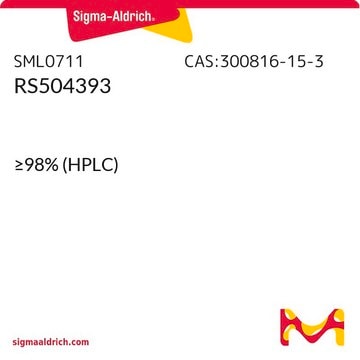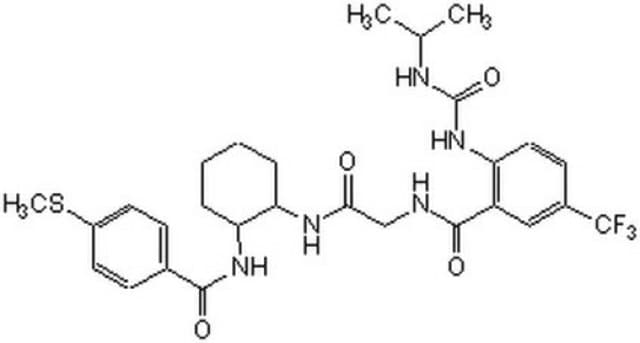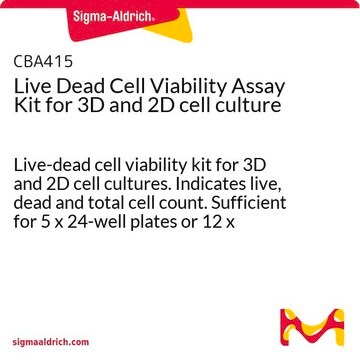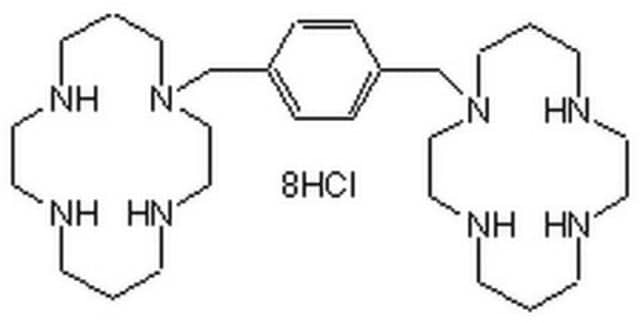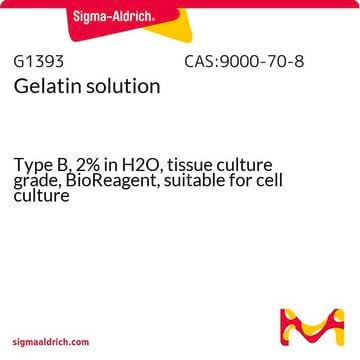PZ0002
Maraviroc
≥98% (HPLC)
Synonyme(s) :
4,4-Difluoro-N-[(1S)-3-[(3-exo)-3-[3-methyl-5-(1-methylethyl)-4H-1,2,4-triazol-4-yl]-8-azabicyclo[3.2.1]oct-8-yl]-1-phenylpropyl]cyclohexanecarboxamide, UK-427857
Sélectionner une taille de conditionnement
701,00 $
Sélectionner une taille de conditionnement
About This Item
701,00 $
Produits recommandés
Essai
≥98% (HPLC)
Forme
powder
Activité optique
[α]-15/D
Couleur
white
Solubilité
DMSO: >30 mg/mL
Température de stockage
room temp
Chaîne SMILES
CC(C)c1nnc(C)n1[C@H]2C[C@@H]3CC[C@H](C2)N3CC[C@H](NC(=O)C4CCC(F)(F)CC4)c5ccccc5
InChI
1S/C29H41F2N5O/c1-19(2)27-34-33-20(3)36(27)25-17-23-9-10-24(18-25)35(23)16-13-26(21-7-5-4-6-8-21)32-28(37)22-11-14-29(30,31)15-12-22/h4-8,19,22-26H,9-18H2,1-3H3,(H,32,37)/t23-,24+,25-,26-/m0/s1
Clé InChI
GSNHKUDZZFZSJB-QYOOZWMWSA-N
Informations sur le gène
human ... CCR5(1234)
Application
Actions biochimiques/physiologiques
Caractéristiques et avantages
Code de la classe de stockage
11 - Combustible Solids
Classe de danger pour l'eau (WGK)
WGK 1
Point d'éclair (°F)
Not applicable
Point d'éclair (°C)
Not applicable
Faites votre choix parmi les versions les plus récentes :
Certificats d'analyse (COA)
Vous ne trouvez pas la bonne version ?
Si vous avez besoin d'une version particulière, vous pouvez rechercher un certificat spécifique par le numéro de lot.
Déjà en possession de ce produit ?
Retrouvez la documentation relative aux produits que vous avez récemment achetés dans la Bibliothèque de documents.
Les clients ont également consulté
Articles
We offer many products related to chemokine receptors for your research needs.
Bioactive small molecules for immune system signaling target identification/validation and antibiotics, antivirals, and antifungals offered.
Active Filters
Notre équipe de scientifiques dispose d'une expérience dans tous les secteurs de la recherche, notamment en sciences de la vie, science des matériaux, synthèse chimique, chromatographie, analyse et dans de nombreux autres domaines..
Contacter notre Service technique

